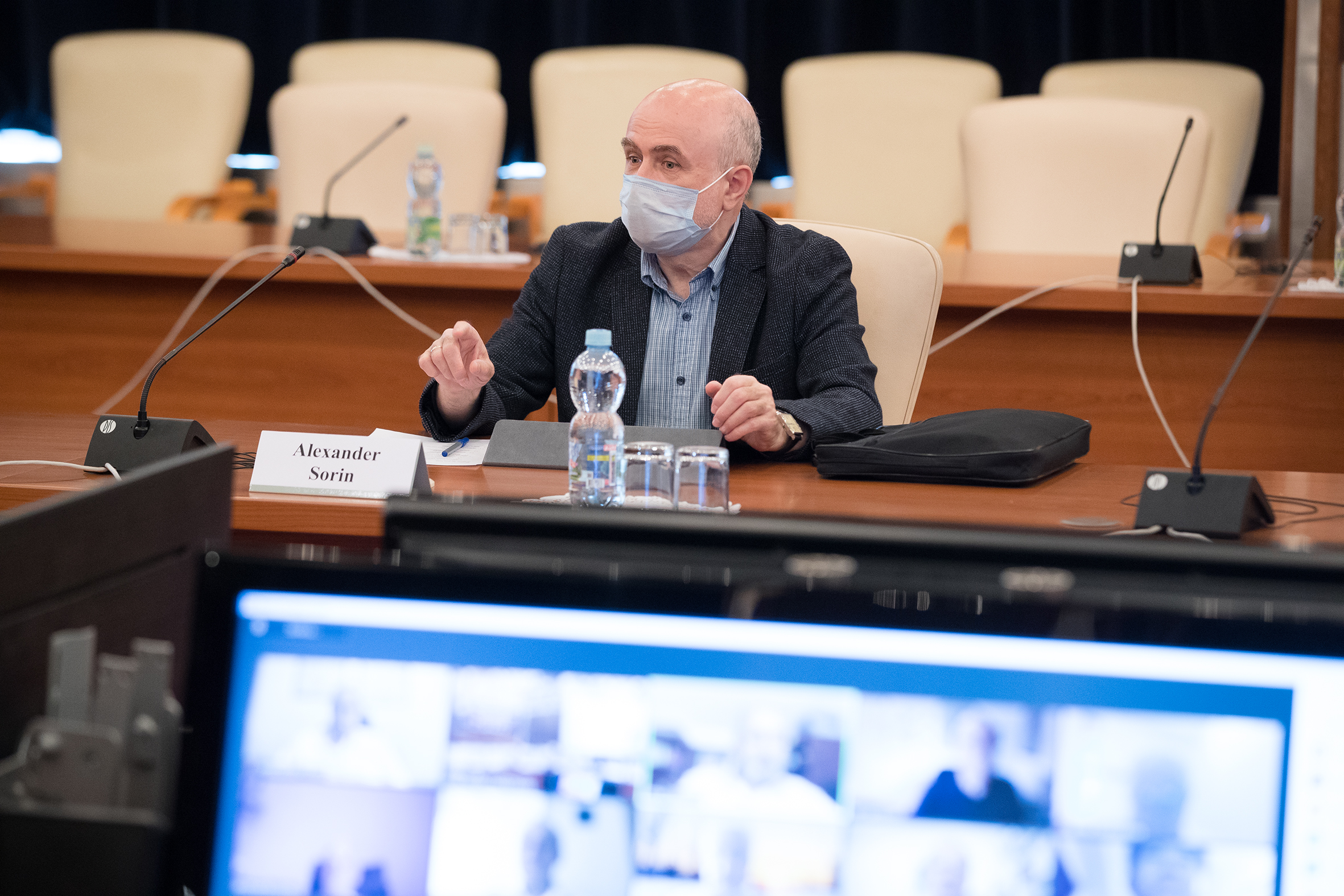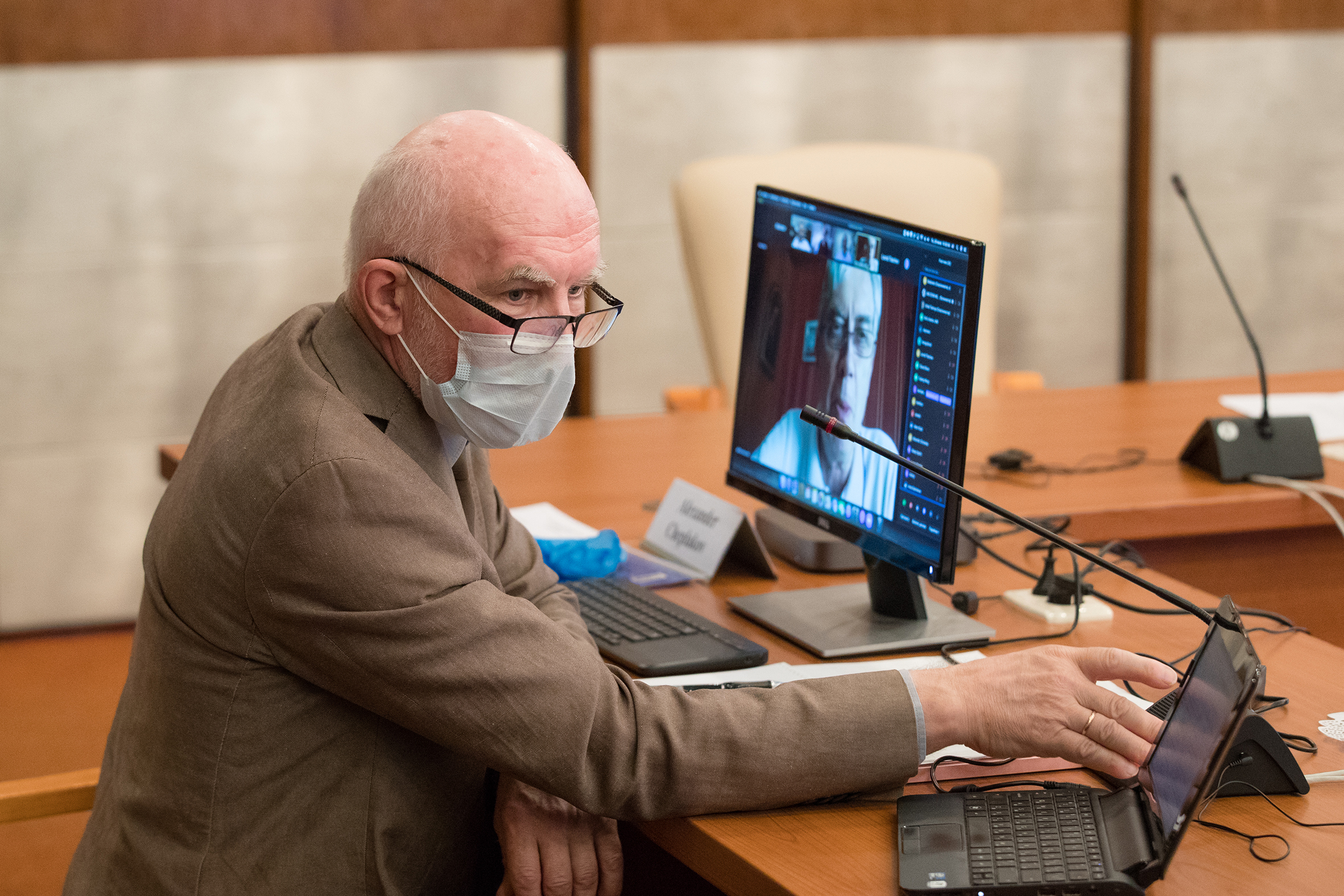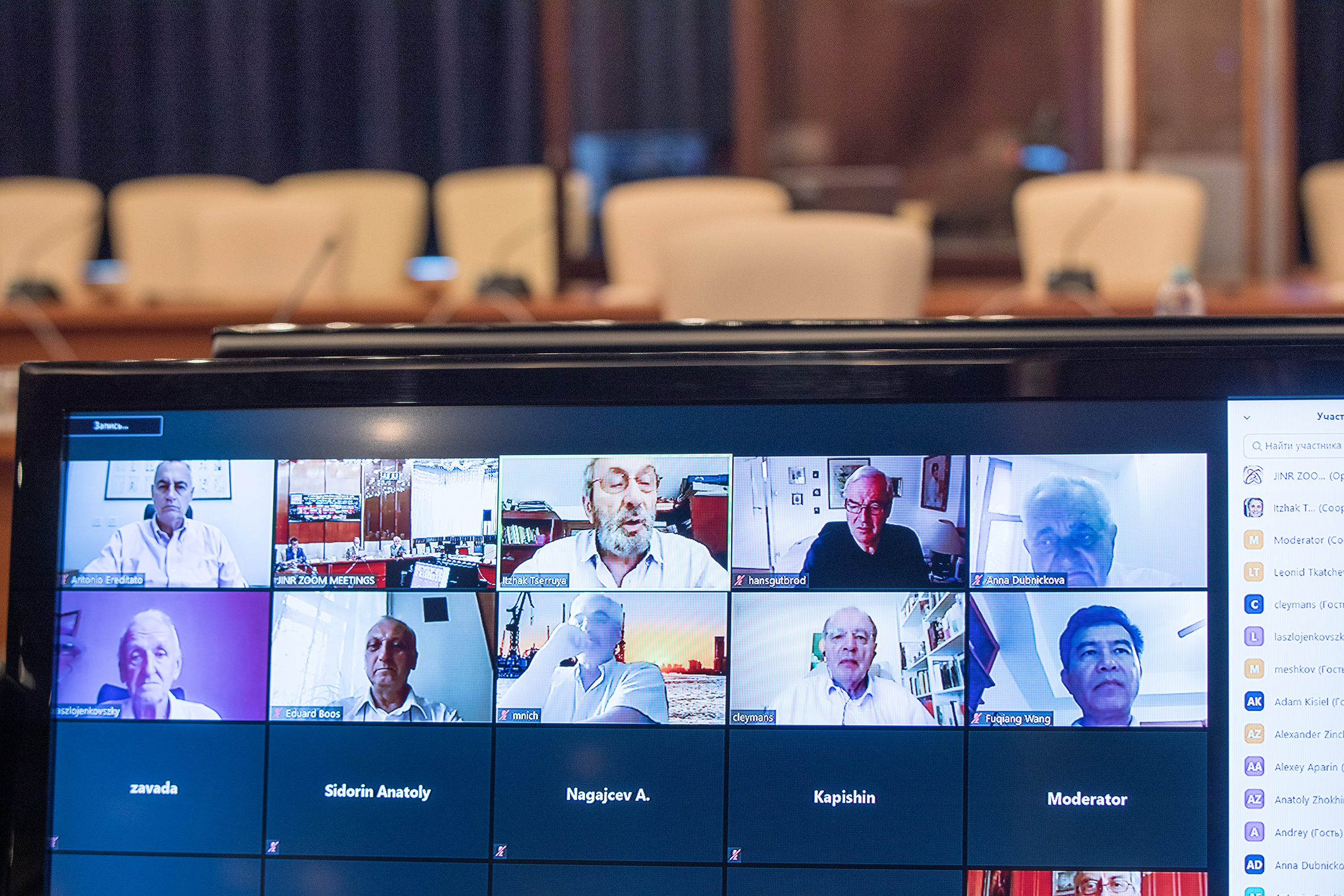PAC PP: a new format meeting
News, 09 July 2020
On 29 June, the 53rd meeting of the Programme Advisory Committee for Particle Physics was held as a video conference with a programme shortened due to the pandemic. PAC PP Chairman I. Tserruya opened the event presenting information on the implementation of the recommendations of the previous meeting. He also noted that participants of the 127th session of the JINR Scientific Council in February 2020 supported all the PAC PP recommendations on the assessment of new projects and prolongation of ongoing ones in the fields of particle physics.
The plenary part of the meeting was traditionally opened with reports on the NICA mega-science project.
Deputy Head of the VBLHEP Accelerator Division A. Sidorin reported on the implementation of the Nuclotron-NICA project. Although limitations caused by the coronavirus were the reason for a two-month delay in vacuum testing and the creation of cryogenic equipment, testing of major booster systems was completed. Participants of the meeting noted active preparation to the launch of the booster with a beam in August 2020. At the same time, concerns were raised about the lack of employees for the construction and testing of the collider’s magnets. According to participants of the meeting, this problem may seriously affect the general schedule of the NICA project, and the JINR Directorate is advised to take corresponding measures. Moreover, it was suggested that the maximum energy of 4,5 GeV/nucleon should be reached at the Nuclotron as soon as possible.
VBLHEP Chief Engineer N. Agapov made the report on the infrastructure developments in VBLHEP, including the Nuclotron. The Committee noted with satisfaction that despite the difficult pandemic situation, all the areas of the infrastructure were developing without any suspensions and at the planned pace in general.
The PAC PP Members highly evaluated the progress in the implementation of the BM@N project that was reported on by Head of the VBLHEP Sector of Detector and Data Analysis M. Kapishin. The first results on short-range nucleon-nucleon correlations with hard inverse kinematic reactions obtained in experiments at the Nuclotron were presented by the BM@N team at the JINR colloquium. Now, they should be published as soon as possible.
V. Kekelidze, RAS Corresponding Member, Leader of the NICA Project, VBLHEP Director, commented for the JINR video portal: “A regular PAC meeting held today has a video conference format. There are many questions, and one of them is how our NICA project is going. The Project is underway, it is developing close to the plan. We are waiting for the big event and do our best. We expect that next month we will be able to enter the MPD building to start assembling the big magnet.”
***
The second part of the meeting was devoted to reports on themes approved for completion in 2020 and those proposed for prolongation.
MPD project. Having heard the report by Head of the Collaboration, VBLHEP Chief Researcher A. Kisiel, the PAC PP members noted steady progress in assembling and production of most of the MPD detector’s elements supposed by the first-stage design. The progress in the production of a technically complex inner tracking system was also noted. Concern was expressed about the delay in the development of the ECAL electromagnetic calorimeter and its impact on the implementation of the physical programme. At the same time, the admission of new participants to the MPD collaboration was noted. Participants noted that work on the expansion of the cooperation in this field should be activated. It was recommended to prolong the project until 2025 with the first priority.
COMPASS-II project. The report by Head of the VBLHEP Sector of Hadron Spin Structure A. Nagaytsev noted that the JINR group would provide technical maintenance and enhancement of the HCAL1 and ECAL0 calorimeters, as well as the MW1 muon detector. It will also develop software for online monitoring of their operation. Moreover, participation in the experimental data analysis is expected. Participants of the meeting expressed their wish for the JINR team to expand its participation in the data analysis and to develop joint works in the physical analysis thus ensuring scientific acknowledgement of 20-year work of the group in the COMPASS project. The PAC PP recommended prolonging the project until the end of 2022 with the first priority. The project concluded, the group should pay attention to the possible participation in the MPD and SPD experiments in which experience of the staff will be certainly useful.
TAIGA project. Head of the DLNP Sector of Astrophysical Research L. Tkachev in his report said that in 2019-2020, a complex of telescopes successfully passed the quality control of equipment and algorithms of data processing. The main responsibility of the JINR group is to design the Imaging Atmospheric Cherenkov Telescope (IACT), to produce and test mechanics. The third telescope was sent to Siberia in April 2020, the 4th IACT will be built in 2021-2023. The group also takes part in the Monte Carlo modelling and data analysis. The PAC PP members noted that the JINR group plays a significant role in the TAIGA collaboration represented by Russian and international scientific centres. In particular, young researchers are encouraged to take a more active part in data analysis as well as to publish methodological results faster and more often. It was recommended to prolong the TAIGA project until 2023 with the first priority.
Daya Bay and JUNO projects. DLNP Deputy Director for Science D. Naumov noted in his report that the contribution of the JINR group to many important detector systems of both experiments was acknowledged and reflected in the management structure of the collaboration. The JINR team will continue the analysis of oscillations and search for sterile neutrinos in the Daya Bay experiment and will also contribute to the development, construction and launch of various elements of the JUNO project. The JINR data centre is expected to become one of the three European centres processing JUNO data. The PAC PP noted the high quality of work performed by the JINR group. It was recommended to continue the implementation of the JUNO project with the first priority until the end of 2023. It was also suggested that JINR employees should avoid simultaneous participation in the DUNE project thus to prevent possible conflicts between two international collaborations.
NOvA project. The report by Head of the DLNP Scientific and Experimental Department of Particle Physics A. Olshevskiy states that since 2014, the JINR group has been making a considerable contribution to the experiment, including to the construction of the detector, development of testing stands for electronics and scintillators, the development of the computer infrastructure at JINR. Members of the group participate in data processing. JINR staff members are among leaders of research areas and work in the experiment. The JINR group also represented its plans in the neutrino project LBNF/DUNE in Fermilab/SURF that is expected to start after the NOvA completion. The PAC PP recommended to continue research in NOvA and approved participation in DUNE until 2023 with the first priority.
It was the first time the PAC PP meeting was held as a video conference. Several years ago, the ideas of holding PAC meetings remotely were discussed. Summer PAC meetings of this year may be considered a test of this transition. We asked PAC Scientific Secretary, Head of the VBLHEP Sector of Physics at ATLAS Alexander Cheplakov to comment on the advantages and disadvantages of the past event in terms of administration and the quality of discussions: “Video conference format has recently become the main format for communication between scientists. This is the way working meetings of particular groups and collaborations, as well as large-scale international conferences, are held now. A significant advantage of remote work is that it saves resources, energy and time of participants. More thorough preparation is necessary to work effectively. Reporters did their best: it was the first time when not a single speaker exceeded the time allotted for the report. There are not so many disadvantages of the format: due to different time zone with the US, we postponed the beginning of the meeting to a later time. We reduced the programme of the event, including the poster reports by young scientists, unfortunately. I found live discussions with the participation of numerous experts more captious. The number of participants was about twice lower than usually. I believe that the video conference format will be more familiar and will remain as far as the development of technologies provides opportunities that should be used.”
The next PAC PP meeting is scheduled for 18 – 19 January 2021.
Galina Myalkovskaya, JINR Weekly Newspaper
Photos by Igor Lapenko






